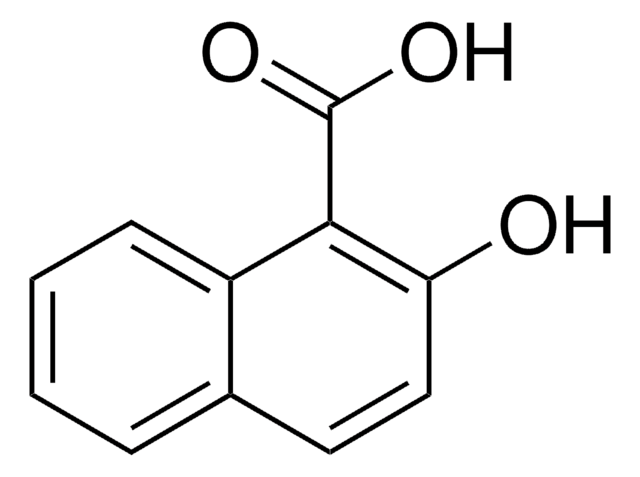W387101
4-Methyl-2-oxopentanoic acid sodium salt
97%
Sinônimo(s):
Sodium 4-methyl-2-oxovalerate, α-Ketoisocaproic acid sodium salt, 4-Methyl-2-oxopentanoic acid sodium salt, 4-Methyl-2-oxovaleric acid sodium salt, Ketoleucine sodium salt
About This Item
Produtos recomendados
fonte biológica
synthetic
Ensaio
97%
pf
275 °C (dec.) (lit.)
aplicação(ões)
flavors and fragrances
Documentação
see Safety & Documentation for available documents
alérgeno alimentar
no known allergens
Organoléptico
buttery
cadeia de caracteres SMILES
[Na+].CC(C)CC(=O)C([O-])=O
InChI
1S/C6H10O3.Na/c1-4(2)3-5(7)6(8)9;/h4H,3H2,1-2H3,(H,8,9);/q;+1/p-1
chave InChI
IXFAZKRLPPMQEO-UHFFFAOYSA-M
Procurando produtos similares? Visita Guia de comparação de produtos
Palavra indicadora
Warning
Frases de perigo
Declarações de precaução
Classificações de perigo
Eye Irrit. 2
Código de classe de armazenamento
11 - Combustible Solids
Classe de risco de água (WGK)
WGK 3
Ponto de fulgor (°F)
Not applicable
Ponto de fulgor (°C)
Not applicable
Equipamento de proteção individual
Eyeshields, Gloves, type N95 (US)
Certificados de análise (COA)
Busque Certificados de análise (COA) digitando o Número do Lote do produto. Os números de lote e remessa podem ser encontrados no rótulo de um produto após a palavra “Lot” ou “Batch”.
Já possui este produto?
Encontre a documentação dos produtos que você adquiriu recentemente na biblioteca de documentos.
Nossa equipe de cientistas tem experiência em todas as áreas de pesquisa, incluindo Life Sciences, ciência de materiais, síntese química, cromatografia, química analítica e muitas outras.
Entre em contato com a assistência técnica






![1-[1-(2-Phenylethyl)piperidin-4-yl]methanamine AldrichCPR](/deepweb/assets/sigmaaldrich/product/structures/126/015/e44a3961-27de-4b43-ab31-b785c5cd7d6a/640/e44a3961-27de-4b43-ab31-b785c5cd7d6a.png)


